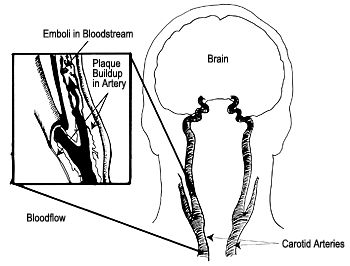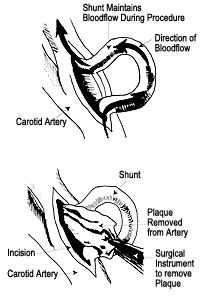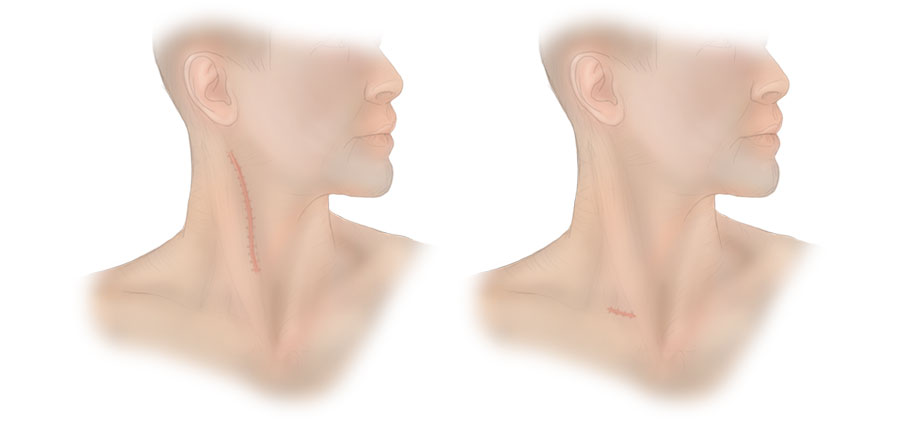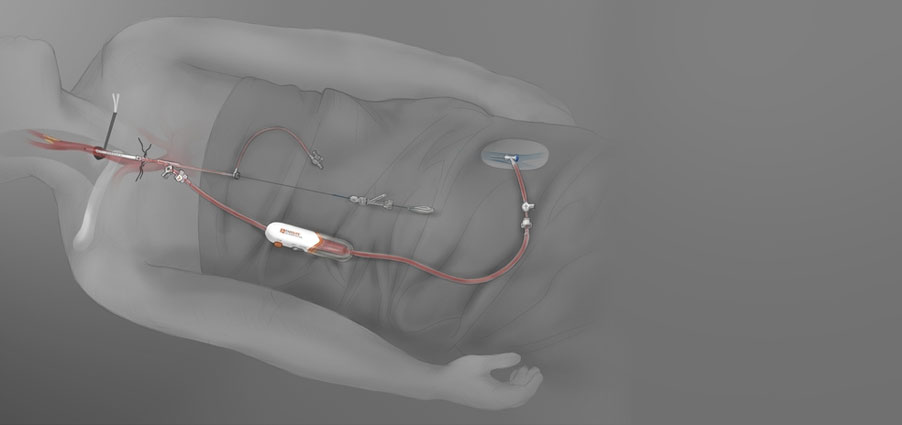What is Carotid Disease?
Two main arteries known as carotid arteries supply the brain with blood. These blood vessels are located on either side of the neck. In healthy carotid arteries, blood flows freely. However, plaque can build up inside the walls of the carotid arteries, narrowing the channel and restricting blood flow. This condition is known as carotid stenosis.

When blood flow to the brain is restricted, severe consequences can develop, including a stroke. Strokes are the third-leading cause of death in the United States, and patients who survive strokes often must live with permanent brain damage that results in paralysis and loss of motor skills.
The rough artery walls caused by the plaque can also contribute to the formation of blood clots in the arteries. The process is very similar to the plaque that can form inside the coronary arteries supplying the heart, which can result in a heart attack. However, in this case, the brain (instead of the heart) is affected.
In addition to stroke, carotid stenosis may also cause a “mini-stroke,” or a transient ischemic attack (TIA). The symptoms of a TIA are similar to those of a stroke but the damage is not permanent, and symptoms disappear within 24 hours.
Carotid stenosis is diagnosed by imaging tests including ultrasound, CT scan, MRI, or angiography. Carotid stenosis is suspected when a physician hears a bruit or turbulent blood flow when listening over the neck with a stethoscope.
Surgical Treatment
The most common treatment for a blocked or narrowed carotid artery is a surgical procedure known as a carotid endarterectomy. Surgery may be necessary following a stroke, or your doctor may advise surgery to correct a narrowed carotid artery before a stroke occurs. Your doctor will make this determination based on how severely your carotid artery is narrowed and whether you have had other symptoms, such as TIAs. Typically, surgery is recommended for patients with more than three-fourths of the artery blocked (greater than 75% stenosis).
In either case, a carotid endarterectomy is a serious surgical procedure that removes the plaque buildup from the inside of the carotid arteries to allow blood to flow freely again.
In special cases, your doctor may recommend a less invasive endovascular angioplasty and stent procedure to treat the carotid plaque. The technology for this procedure is still evolving and is not yet available for widespread application. The latest development is a hybrid approach known as transcarotid arterial revascularization (TCAR) that combines the best elements of both surgical endarterectomy and endovascular stent procedures.
What Takes Place During Surgery (Endarterectomy)?

A carotid endarterectomy may be performed with either general or local anesthesia (you remain awake) to prevent pain. The procedure usually takes about one to two hours.
The surgeon will make an incision in the skin on the side of your neck near the carotid artery to be treated. The surgeon will then make an incision in the diseased carotid artery itself.
In order to maintain blood flow to your brain during the operation, the surgeon will temporarily insert a small tube (or shunt) to reroute the blood flow around the treated area. The doctor carefully removes the plaque from the inside of the artery wall. This allows more room for the blood to flow and reduces the likelihood of blood clots forming.
Once the plaque is removed, the shunt will be removed. The surgeon will close up the artery with stitches and close the skin incision.
What Takes Place During TCAR?

TCAR is a less invasive alternative to carotid endarterectomy, so procedures tend to be shorter and is more commonly done under local anesthesia. The surgeon still makes an incision, but it’s much smaller and is lower on the neck, close to the collar bone.

The surgeon places a specialized tube into the carotid artery and temporarily reverses the blood flow away from the brain. This is to protect against debris that may come loose during the procedure. The blood is filtered and returned through another tube in the upper leg. While the flow is reversed, a stent is placed to prop open and stabilize the plaque. Most patients experience no issues with the temporary blood flow reversal because there are multiple arteries that continue to supply blood to the brain.
Once the stent is deployed, flow reversal is stopped and the surgeon will remove all the tubes and close the incisions with stitches.
Following Treatment
Expect to remain in the hospital for one or two days following treatment. While you’re in the hospital, you may have an IV to provide you with fluids, and your vital signs will be monitored.
Once you return home, take it easy for a few days. Your doctor will give you specific instructions for how to care for your incision. You should be able to return to work and other activities in several days.
